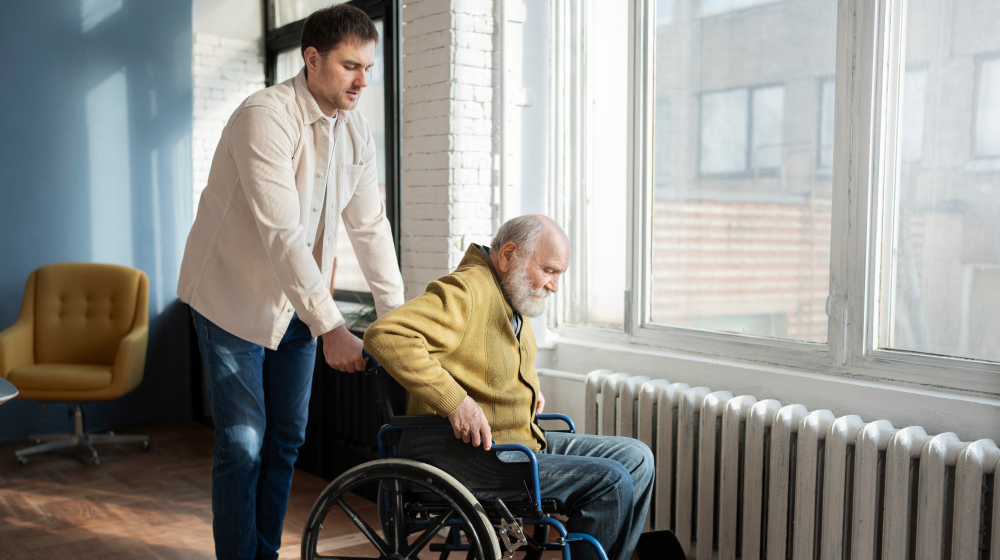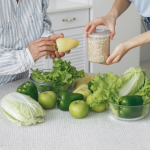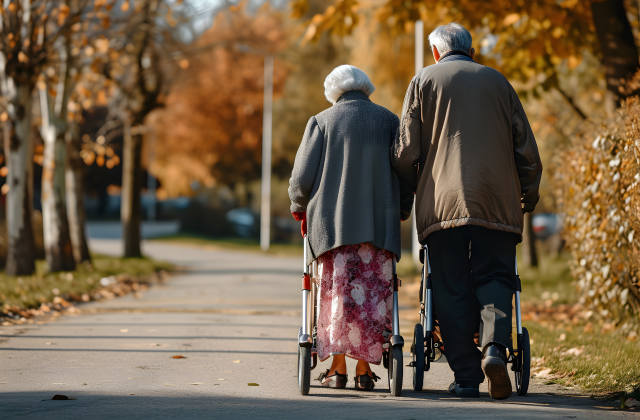Best Mobility Aids for Seniors: How to Choose the Right One
Ensuring safe and effective mobility for seniors is a crucial aspect not only for the elderly themselves but also for their families and home care professionals. As physical limitations and decreased mobility increasingly affect older adults, properly selected mobility aids for elderly can dramatically enhance quality of life, promote independence, and reduce risks of falls and injuries. This article explores how to make the best choices when choosing the right mobility aid for seniors, reviews various senior home care mobility products, and highlights key factors to consider when selecting mobility devices.
Why Choosing the Right Mobility Aid Matters
For many seniors, transitioning to using mobility assistance is not only a matter of safety but also one of preserving dignity and autonomy. Improperly fitted or unsuitable mobility devices for elderly at home may worsen balance issues, cause pain, or contribute to emotional distress.
“Choosing the right mobility aid is an investment in a senior’s quality of life and confidence in their own abilities.” — HHA Angel Care Inc. NY

Main Types of Mobility Aids for Seniors
1. Canes
The most common and simple support tool. Canes vary in design—from single-point models to quad canes with four legs for greater stability, and folding versions for easy transport.
Advantages:
- Lightweight and compact
- Support for mild balance impairments
- Affordable
What to consider when choosing a cane:
- Height should match the senior’s stature to avoid strain
- Comfortable, non-slip handle
- Materials such as lightweight aluminum or wood
2. Walkers
Designed for those with more significant balance or strength limitations. Walkers have four legs and may include wheels for easier movement.
Types of walkers:
- Standard (stationary)
- Rolling walkers (rollators)
- Walkers with built-in seats for rest
Benefits:
- Maximum stability
- Weight redistribution support
- Prolonged independence
3. Wheelchairs
Used when walking is impossible or highly restricted due to severe mobility loss.
Types:
- Manual wheelchairs
- Electric wheelchairs
Seats, wheels, and controls should be customized to the individual’s needs.
Key Factors When Choosing a Mobility Aid
Selecting the best device requires a comprehensive assessment of physical condition, lifestyle, living environment, and emotional comfort.
Physical Health and Ability
- Muscle strength and endurance
- Balance and coordination
- Chronic conditions (arthritis, osteoporosis)
- Ability to safely sit and stand
Home Environment
- Size and layout of rooms
- Presence of stairs and thresholds
- Flooring type (carpet, tile, wood)
Psychological Comfort and Habits
- Willingness and motivation to use the aid
- Level of desired activity and mobility
- Fear of falling and related barriers
| Device Type | Model | Features |
| Quad Cane | Hugo Quad Cane | Maximum stability, foldable design |
| Standard Walker | Drive Medical Deluxe Walker | Durable frame, adjustable height |
| Rollator Walker | Medline Rollator | Ideal for longer walks, equipped with brakes |
| Manual Wheelchair | Invacare Tracer SX5 | Lightweight and maneuverable |
| Electric Wheelchair | Pride Mobility Jazzy Air 2 | Advanced lift and comfort features |
Adaptive Devices to Enhance Senior Mobility
In addition to primary mobility aids, various adaptive devices for elderly mobility increase safety and ease:
- Grab bars and handrails (bathroom, stairs)
- Lifting aids and footrests
- Non-slip mats
- Shower and toilet seats
Tips for Proper Use and Maintenance
- Regularly inspect wheels and rubber tips for wear
- Keep mechanical parts clean and lubricated if applicable
- Store devices in dry environments
- Consult health professionals upon any change in mobility
- Educate users on correct walking techniques with the aid
Why Choose Angel Care Inc. NY for Mobility Aid Support?
Angel Care Inc. NY offers expert home care and guidance in selecting mobility aids for elderly, providing not only technical assistance but also emotional support tailored to each client’s unique needs. Our caregivers help customize devices, teach their proper use, and ensure a safe home environment.
“Supporting mobility is key to preserving independence and dignity for our senior clients.” — Angel Care Inc. NY
Conclusion
Choosing the right mobility aid for a senior is a multidimensional process involving physical assessment, living conditions, and emotional readiness. Modern senior home care mobility products empower older adults to stay active and safe. Contact Angel Care Inc. NY for personalized consultation and compassionate support every step of the way.

Organizing nutrition for the elderly is a task that requires not only attention to calories and macronutrients but also a deep understanding of the changes the body undergoes with age. Proper nutrition for seniors is not just a set of foods but a thoughtful strategy that considers the physiological, emotional, and social aspects of life. To understand how to feed the elderly in a way that supports their health and vitality, it is necessary to follow clear guidelines and take into account each person’s individual characteristics. Why proper nutrition for seniors is crucial With age, metabolism slows down, nutrient needs change, and vitamin and mineral absorption becomes less efficient. Senior nutrition guidelines recommend paying special attention to the quality and variety of the diet because a healthy diet for the elderly is the foundation for preventing chronic diseases, supporting immunity, and maintaining cognitive function. Senior meal planning: How to build a balanced menu for the elderly? Meal planning for seniors requires considering factors such as: decreased appetite and changes in taste preferences; the need to control intake of salt, sugar, and saturated fats; presence of diseases that affect food choices (e.g., diabetes, hypertension); convenience and accessibility of food, especially for those living alone. Balanced meals for elderly include moderate amounts of proteins, complex carbohydrates, healthy fats, as well as sufficient fiber, vitamins, and micronutrients. This supports energy, skin and hair health, and promotes normal digestive function. Healthy diet for elderly: Which foods to include? The diet should be rich in: fresh vegetables and fruits, sources of antioxidants; lean meat and fish, providers of complete proteins; whole grains that help regulate blood sugar levels; low-fat dairy products or alternatives to maintain calcium. Proper distribution of these components throughout the day and variety in dishes ensure nutrition that is both beneficial and enjoyable. Organizing nutrition for the elderly: How to simplify the process? Nutrition organization is not only about choosing foods but also about creating comfortable eating conditions. This may include: designing an individual menu considering preferences and restrictions; regular meals in a calm atmosphere; using high-quality ready meals or semi-prepared foods to save time and effort; involving helpers or relatives for support and supervision. Such a comprehensive approach helps avoid nutrient deficiencies and improves the quality of life for the elderly. Proper nutrition is the key to active longevity, and an organized, balanced diet is the foundation of health, energy, and good mood in older adults. Use the recommendations on organizing nutrition for the elderly to provide full care and support, creating the basis for a happy and healthy life. At Angel Care Inc. homecare services, we are deeply committed to the well-being of our clients. Our specialists provide dedicated support to help you restore balance and simplify your life.

Depression is a complex and often overlooked mental health issue for older adults that has substantial implications for physical health, quality of life, and emotional wellness. Comprehensive elderly depression care at home requires individualized and multifaceted approaches that are geared toward an integrated intervention of medical care, professional caregiving, psychological care, as well as creating a safe and supportive home environment. In this article we outline the best approaches for how to manage depression in older adults and what home care for elderly mental health can do to help give joy and purpose back to daily life. Recognizing Depression in the Elderly: Symptoms and Challenges Depression in seniors often masked as physical symptoms or deterioration of cognitive function can make timely identification of depression difficult. Key indicators of elderly depression include: Chronic fatigue and insufficient energy Changes in sleep and appetite Loss of interest or pleasure in activities that were enjoyed Isolation or withdrawal from social interactions Hopelessness and sadness Identifying early indicators of these symptoms is critical to avoid additional complications as a result of inadequate intervention. How Home Care is Important to Elderly Mental Health Elderly mental health home care services provide comfort, safety, and focused engagement that are often elusive in a long-term care setting. The home setting is familiar and promotes emotional balance and lower stress levels as well as a sense of independence. "Helping seniors suffering from depression in their own homes is an important element of successful treatment and recovery."—Angel Care Inc. NY Effective Care and Enabling Therapy Approaches for Elderly Depression Medication and Monitoring The treatment of depression experienced by seniors may mean that they require careful medical supervision and care to support them at home, as well as assessments to ensure they are taking medication in a timely manner and evaluating medication for effectiveness. Psychological and/or Emotional Support Elderly emotional support at home must involve the delivery of regular contact, ongoing support in promoting goal directed social and creative activities, and some form of assistance in times of distress. Professional caregivers can help attempt to overcome anxiety and loneliness. Therapeutic Programs at Home Caring for seniors with depression at home that may convert into therapy - individualized therapeutic sessions, working with a psychologist or therapist, at home - can also positively contribute to enhancing their emotional resilience, and will help establish coping strategies to deal with negative and unhelpful emotions and thoughts. Exercise and Routine Light exercise and walks, and having scheduled daily activities, can improve emotional wellbeing and overall elderly quality of life. Recognizing Depression and/or Emotional Distress, and When to Seek Support Family and caregivers should recognize changes in behavior and mood with elderly clients. Early Activation, and subsequent diagnosis and treatment, is necessary for effective depression treatment for seniors. Tips to consider: Monitor for changes in sleep, appetite, and activity People slowly withdraw from contacts and stop talking Physicians may misdiagnose a serious medical condition so report any symptoms immediately Don't delay getting help Benefits of Home Care with Angel Care Inc. NY Angel Care Inc. NY provides continuous comprehensive mental health care for elderly at home services with superior benefits: Comprehensive individualized based care plans that consider the psycho-emotional; Continuing support services and professional assistance 24/7 knowledge and experience in mental health training; Teaching families and caregivers ways to support seniors effectively; Coordinating care and treatment with any medical professionals "At Angel Care Inc. NY our goal is to make every day of a senior's life a day filled with care, understanding, and support."—Angel Care Inc. NY. Conclusions Caring for elderly persons with depression can be challenging work as there are many complex demands and barriers to overcome to provide the necessary care and support. Elderly at home home care for mental health care and treatment continues to be a supported, reliable solution and provides elderly seniors with quality of life and emotional support to ensure they maintain their improved emotional well-being while being in a familiar location and home. If you or your loved ones are dealing with depression, do not be afraid to ask HHA for help — together we can bring back lightness and joy to every day.



